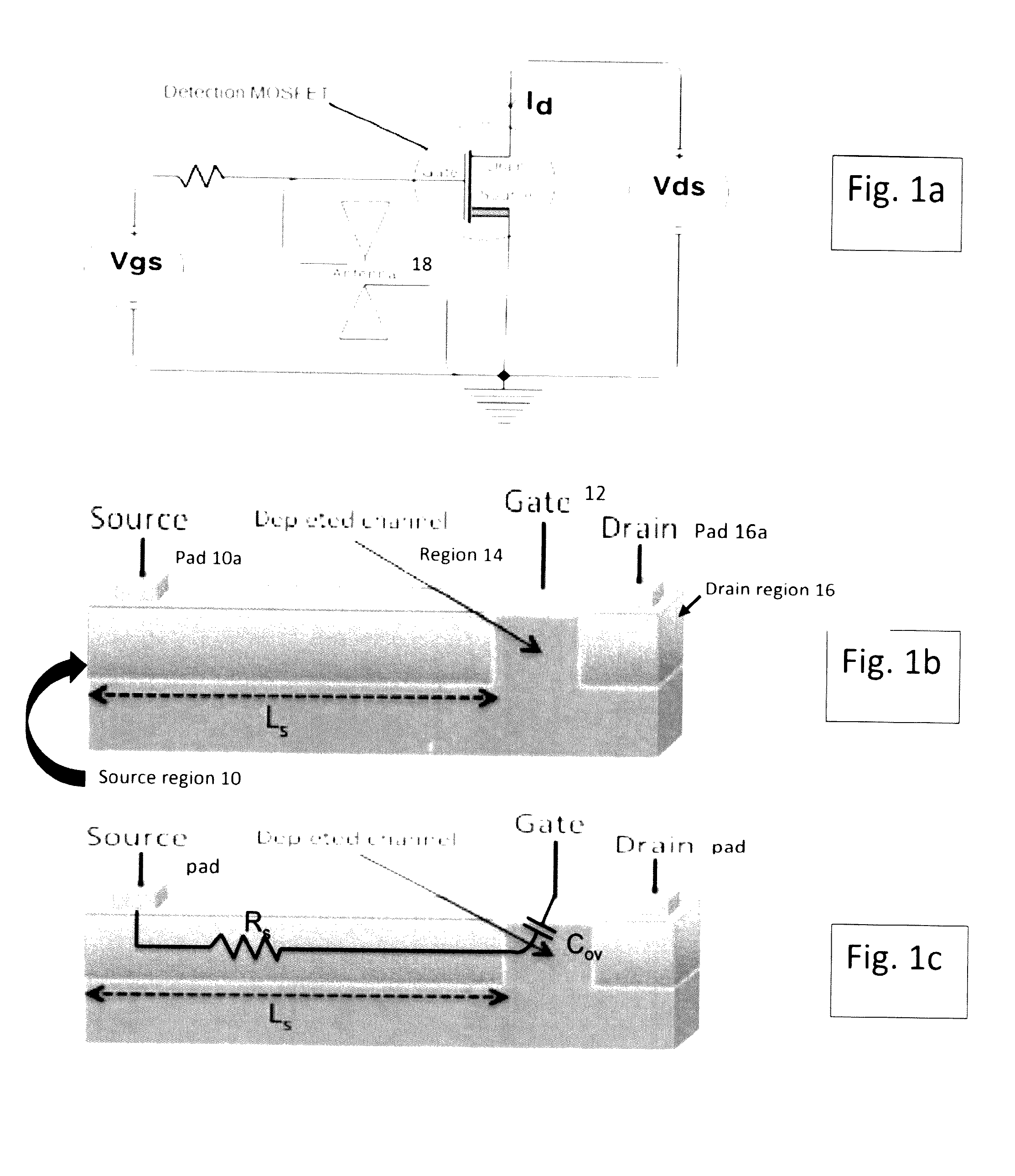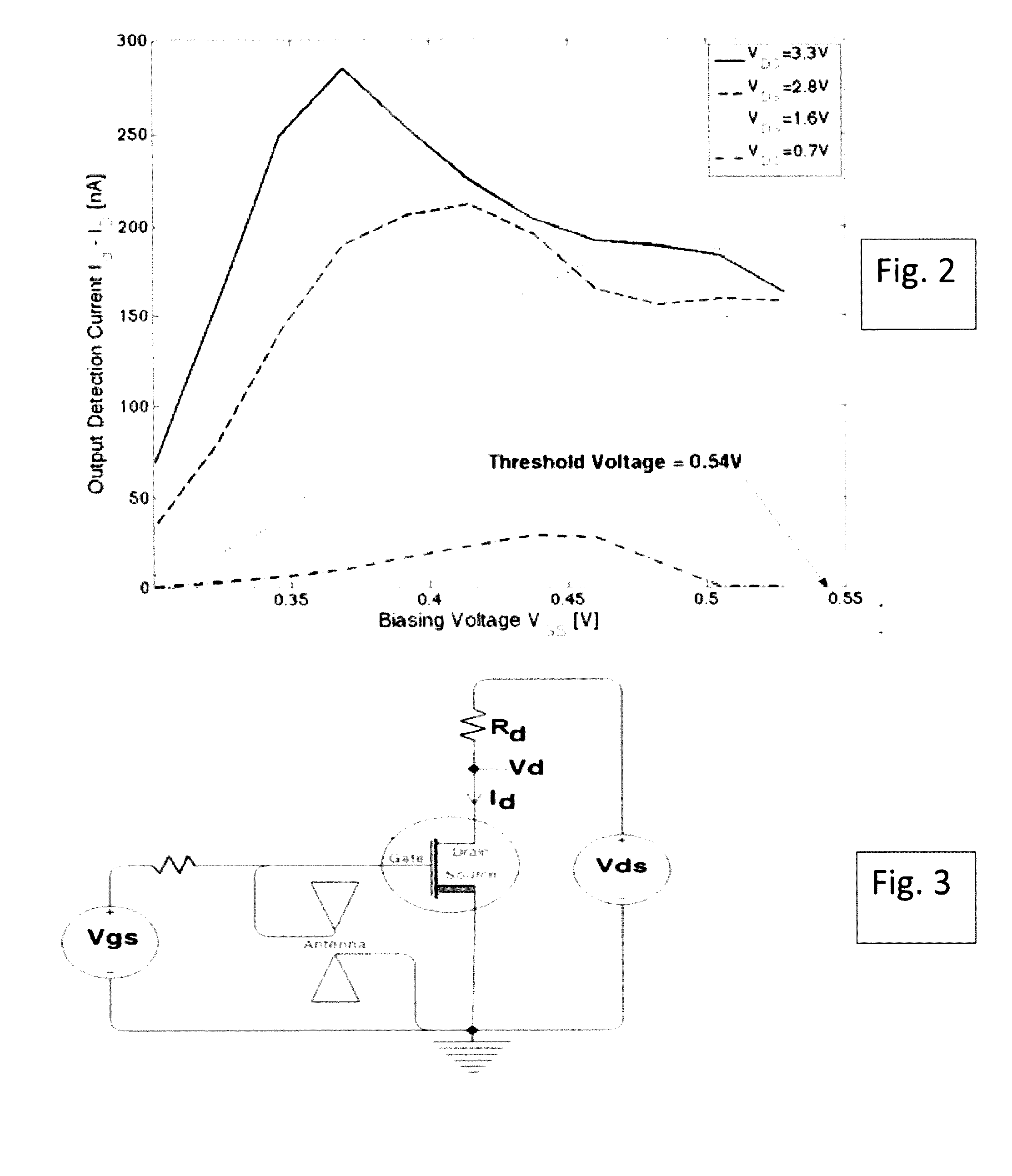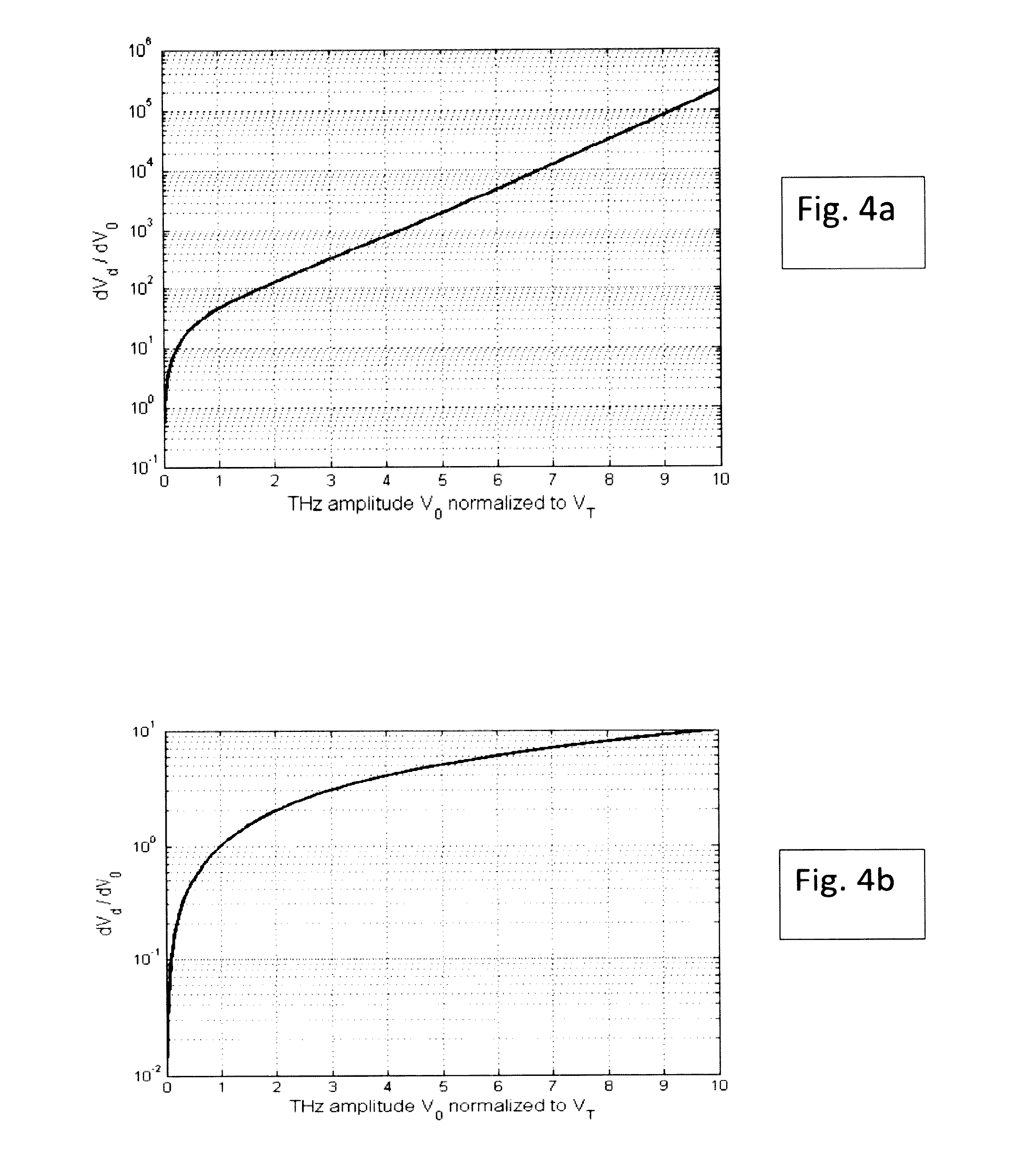THz RADIATION DETECTION IN STANDARD CMOS TECHNOLOGIES BASED ON THERMIONIC EMISSION
a technology of thermionic emission and thz radiation, applied in the field of thz radiation detection, can solve the problems of low sensitivity, limitations of known detectors, and inability to realize the effect of thz radiation, and achieve the effect of improving increasing the responsivity to thz radiation
- Summary
- Abstract
- Description
- Claims
- Application Information
AI Technical Summary
Benefits of technology
Problems solved by technology
Method used
Image
Examples
Embodiment Construction
[0022]FIG. 1a illustrates a simplified schematic of a pixel for detecting THz energy that can be referred to as a THz signal. In accordance with some of the disclosed embodiments, the device in this example comprises a MOSFET (metal oxide semiconductor field effect transistor) implemented as an NMOS transistor that has an otherwise typical or standard structure but notably has an extended source region 10 that has a length Ls as illustrated in FIG. 1b, which has a significantly greater dimension than in a standard MOSFET. The biasing voltage Vgs between gate 12 and source pad 10a is kept below the threshold voltage Vt or Vth of the transistor so that the channel region 14 is depleted of free carriers and forms a depleted channel acting as a potential barrier at the source-channel boundary (i.e., the height of the potential barrier is set by the biasing voltage Vgs). The drain-source voltage Vds between drain region 16 and source region 10 is maintained high enough so that the drain ...
PUM
 Login to View More
Login to View More Abstract
Description
Claims
Application Information
 Login to View More
Login to View More - R&D
- Intellectual Property
- Life Sciences
- Materials
- Tech Scout
- Unparalleled Data Quality
- Higher Quality Content
- 60% Fewer Hallucinations
Browse by: Latest US Patents, China's latest patents, Technical Efficacy Thesaurus, Application Domain, Technology Topic, Popular Technical Reports.
© 2025 PatSnap. All rights reserved.Legal|Privacy policy|Modern Slavery Act Transparency Statement|Sitemap|About US| Contact US: help@patsnap.com



